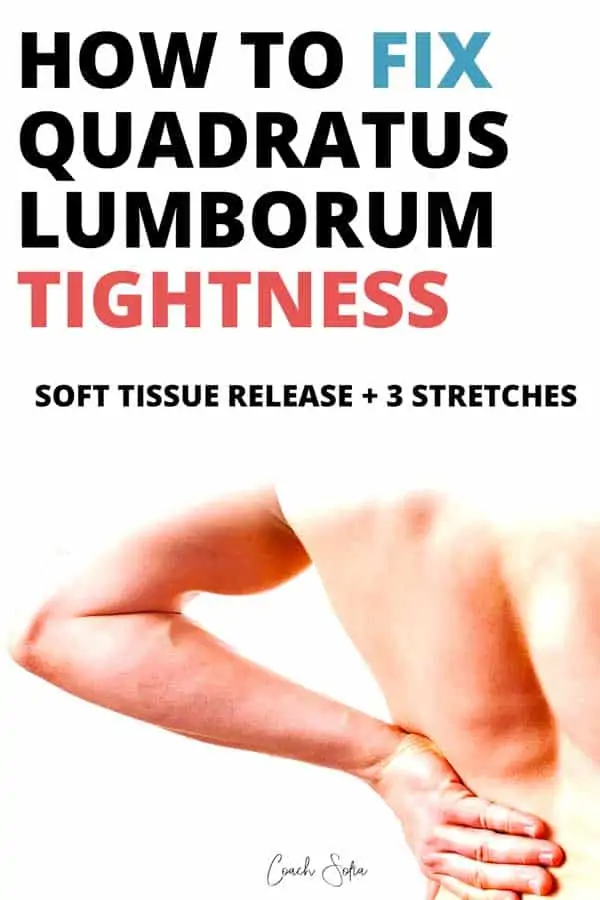
It can be tricky to properly stretch the quadratus lumborum muscle. it’s a deep muscle part of the posterior abdominal wall.
In today’s tutorial, you’ll get 3 great stretches to stretch out a tight QL muscle. I also have some bonus material to help you fully release any chronic tightness.
It’s not easy to just roll the QL with the foam roller. It’s deep. (You should also never foam roll your lower back. More on that below!)

Where Is The Quadratus Lumborum Located?
The quadratus lumborum is lateral to the lumbar spine. It connects the ilium to the 12th rib and lumbar vertebrae (1).
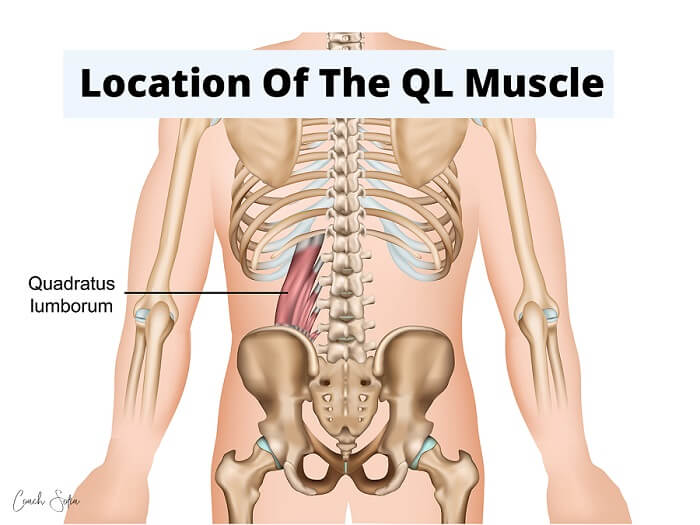
Specifically, it originates from the iliac crest of the pelvis (the outer area of the back of the hip bone) and inserts into the transverse processes of the lumbar vertebrae L1-L5 (2).
I hope you can see how the QL can create both lower back and hip pain. (As it connects both)
Quadratus Lumborum Functions
Many functions have been attributed to quadratus lumborum. Primarily, the QL muscle laterally flexes the spine. It’s also an important stabilizer to the lumbar spine.
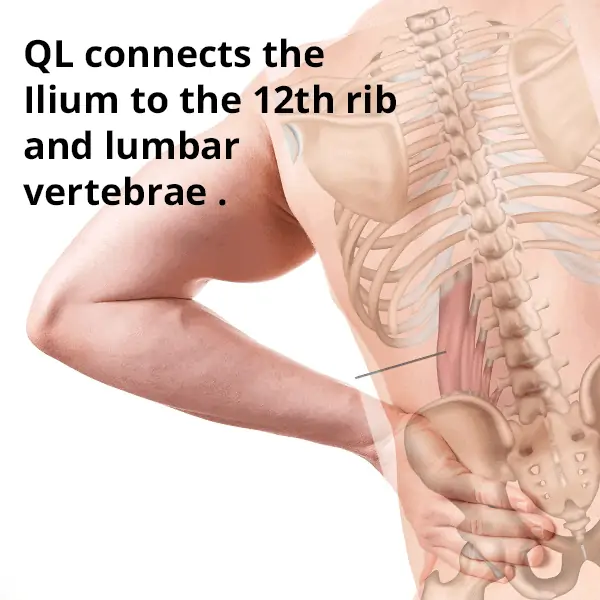
My goal for this post is to provide you with everything you need to release the quadratus lumborum muscle with both stretches and soft tissue release. I also want to show you how to avoid this recurring pain.
So make sure to read until the end. Let’s begin with the 3 stretches and move to the self-myofascial release technique I recommend you do before the stretches. I have a full video tutorial for you below.
3 Quadratus Lumborum Stretches
QL Wall Stretch

- You want to stand with your side against the wall. Your hip touching the wall.
- Raise your arm up that’s against the wall. Lead to the side and move forward and at an angle.
- You should feel a nice stretch on the QL as well as the latissimus dorsi muscle.
Child Pose Stretch

- Get down into the child pose position.
- From there, reach out with your arms and move your arms to one side. hold the stretch for 10-20 seconds, then slowly move your arms to the center, and then to the other side.
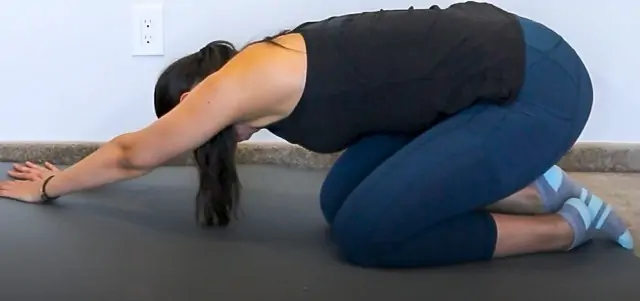
This nice QL stretch will also release lower back tension and help decompress the lumbar spine.
90 Degree Stretch
This is a great glute stretch. And with a small twist, we can target the QL muscle as well and release it.

- Get into the 90-degree stretch position.
- Make sure your front and back leg are at a 90-degree angle.
- Lift your arm up (the front leg side).
- Bend your body to the side to elongate the side of your back.
- Reach out diagonally. You should feel the side of your back stretching (where the QL muscle is located).
- Switch sides…
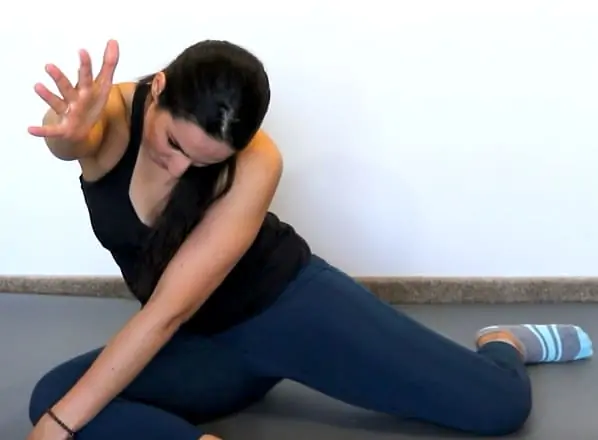
How To Release QL Tightness
Grab a massage ball (A tennis ball works too!).
Find the quadratus lumborum muscle. (I already covered how to find and release the QL muscle here. Below is a quick summary)
You can do this by standing straight, placing your hands around the back of your hips…
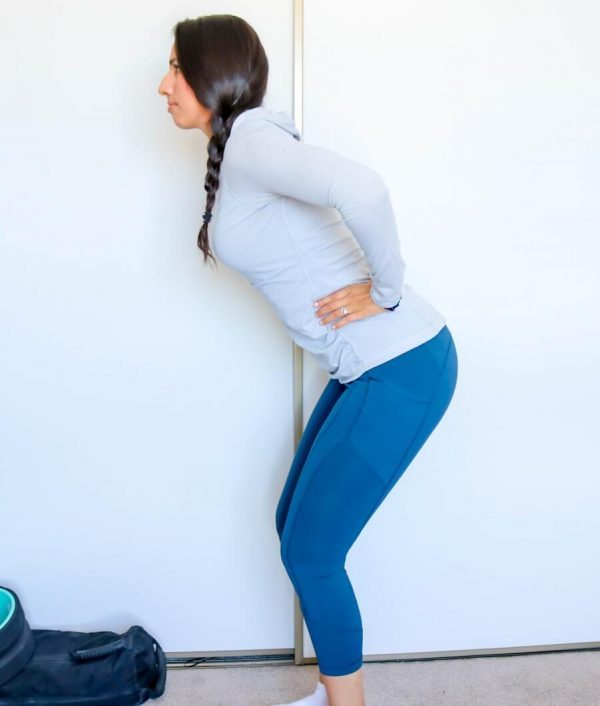
Then from here, bend laterally to the right or left side. You should feel the QL engaging to laterally flex the spine.
Place the ball on the muscle and lean against the wall.

Disclaimer: Avoid placing the ball on your spine or rolling on your spine. Never do this. We want to always stay on the muscle. Stop the exercise if you get nerve pain, numbness, or any shooting pain. If you stay on the QL muscle, you should be fine.
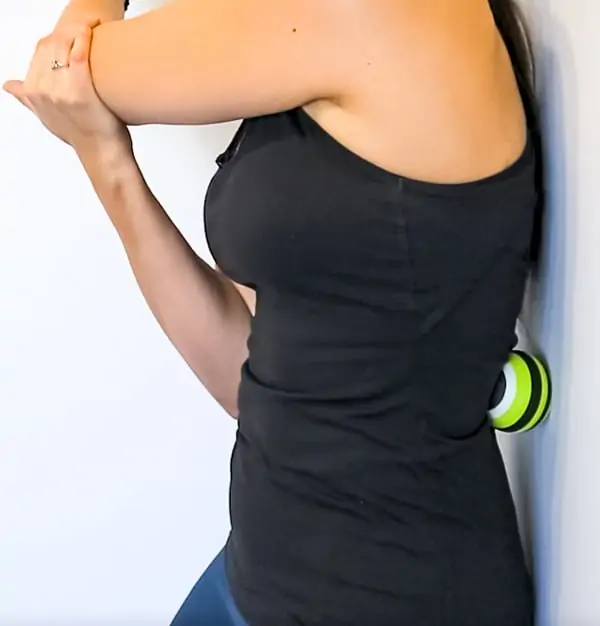
I start from the thoracic spine area (lateral to the spine) and slowly move down. That area tends to be very tight in general.
When you roll on an area that feels very tight, stop and take a few deep breaths while slowly rolling up and down to release that tightness.
It should feel like you’re pushing the tightness down and after a while, you’ll feel a great relief. Make sure to not foam roll your lower back area.
Quadratus Lumborum Tightness: Postural Mistakes
My goal is for you to not only release the QL but to avoid developing this tightness in the first place. Below are the most common causes of quadratus lumborum tightness.
Another great resource to learn how to fix back pain permanently is the Back Pain Control program.
Prolonged Sitting
The first common cause of quadratus lumborum tightness is prolonged sitting without adequate lumbar support. We’re usually busy and don’t pay too much attention to our posture.
Being mindful of this will pay off in the long run.
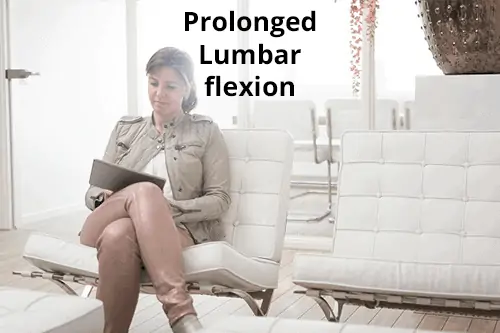
The back muscles will bear the load if you sit for hours every day. Maintaining good posture and placing a lumbar support behind your back will help you avoid this tightness.
Leaning To One Side
A second common cause is sitting and leaning to one side.
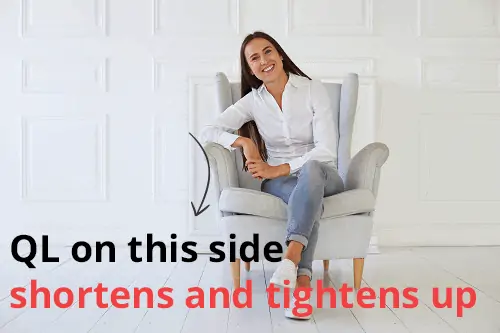
And we usually tend to have a preferred side to lean on.

It’s very common to sit in the passenger seat and start leaning on the hand rest.
During our last road trip, we drove for more than 15 hours. At one point, I had to make a huge effort to maintain a good posture and avoid side leaning.
Doing this automatically puts more tension on the QL muscle on that side.
While doing it on purpose to accomplish a goal (picking something up, exercise, quickly reaching for an item) not have a negative effect, maintaining this posture for a long time and doing it repetitively would certainly tighten up the QL in the long run.
And, sure enough, when we got to our end destination, I definitely felt more tightness in my lower back area.
I spend a few minutes releasing it and doing core exercises and it got better. I have the QL release tutorial I did below.
Sleeping Posture (with one hip hiked up)
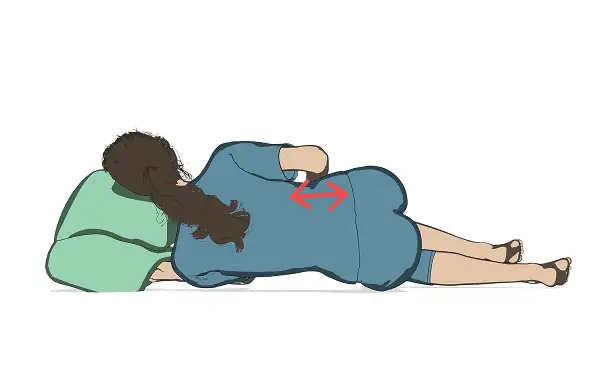
Your posture at night is just as important as your posture during the day. We spend hours sleeping.
And that has an effect on our muscles and joints.
A sleeping posture that can certainly contribute to QL tightness is sleeping with your hip hiked up.

It’s so easy to get into that comfortable position and curl up into a ball. But, be careful to always stabilize your pelvis and make sure your hips are aligned.
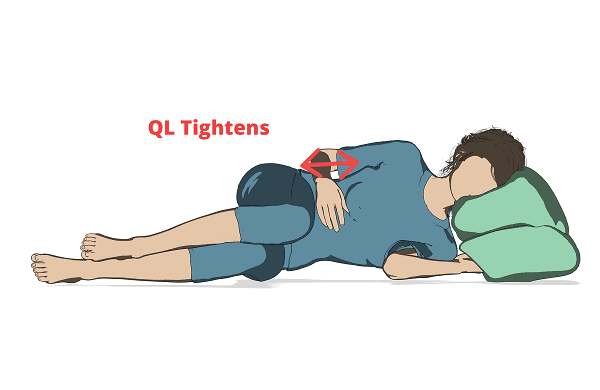
In addition, notice how your body gets into that C position when you sleep on the side and rest your head on high pillows.
Overtime, holding this posture for hours every night can shorten the QL and create chronic tightness.
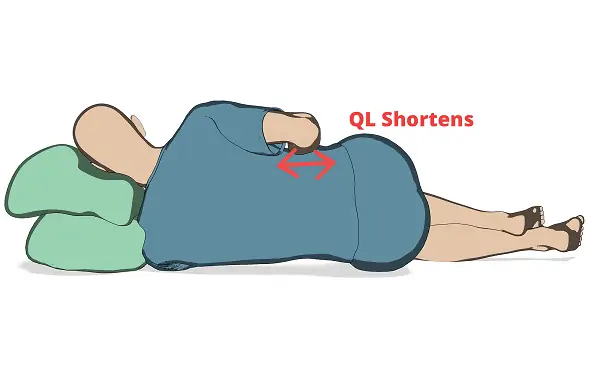
I have a step-by-step post on the best sleeping postures to avoid hip, lower back, and neck pain.
Side Bending To Compensate During Exercise
Chronic tightness can also be caused by side bending from compensation during certain exercises. You may not notice this at first.
For example, when performing the side-to-side glute activation walks, many people start to bend to drive the movement (I’ve seen this many times at the gym).
(I demonstrate this compensation pattern in the video tutorial below)
This side bending engages the QL muscle and leads to tightness, or it can at least contribute to it.
There are many reasons why people compensate during this exercise:
- The band is too tight and they have to use their back to push through the movement.
- Weak glutes that can’t execute the movement with resistance (using a lighter band usually helps).
- Simply not knowing how to do this exercise with proper form. I’ve seen a lot of personal trainers not correct their clients when they engage in this flawed movement.
Compensation can usually be fixed simply by learning how to do the exercise with proper form, and understanding what you’re trying to achieve by doing the exercise.
For example, to avoid engaging the QL in the example above, learn that the glute medius abducts the hip. No side bending should happen to “help out”.
You want to keep your back stable and straight, and only move your legs side to side. Moving your upper body to help will only reduce the effectiveness of the exercise.
Quadratus Lumborum Pain Release Stretches Tutorial
I hope this post has been helpful and you’re able to fix this pain quickly. If you have a question about anything I covered, drop me a comment below!
Leave a Reply